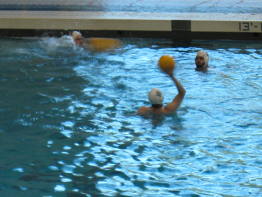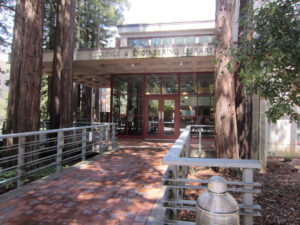FAQs

Who gets admitted to top colleges?
+ more
High grades and test scores are starting points, though admissions offices usually consider the context of a student’s environment and available resources. College admissions have changed dramatically even over the past few years. Colleges that used to be reasonably good bets for top students are no longer “safe schools”.
Extraordinary extracurricular activities or somehow making a real difference in the school or community invite institutions to take the student to a higher level of accomplishment. Highly selective colleges and universities seek not only excellent students but also those who align with the institutional mission. Though the emphasis is on “applying to college” – filling out a form and submitting it — understand that a symbiotic relationship exists between the institution and the students whom it admits.
Make the most of opportunities during the high school years. For details about today’s high school environment, please refer to the College Prep webpage.
Which college do you want to go to?
+ more
Don’t answer that question, even from family and friends. While the question may be motivated by simple curiosity, this is nobody’s business except that of your parents, who are paying the bills, or your counselor and teachers, who are writing your recommendations. This is a situation where you can jinx your outcome in more ways that you can imagine. Peers are seeking ideas. The environment is competitive. A safe response is to name local popular state institutions or say that you’re still thinking things over and couldn’t possibly comment. Mind your social media posts.
One student quoted in a national magazine was denied not only by his favorite college but also by all other colleges on his list. Another student who literally had everything – grades, curriculum, awards, activities – except guile during an online recorded interview, was denied or waitlisted by all private institutions except the top choice he named. (Public universities welcomed him.) “Yield” – a college metric of the percentage of admitted students accepting their offer – could be involved. The higher the yield, the more selective the institution. If you seem unlikely to accept an offer, you may not be admitted.

Are test scores important?
+ more
In the current test-optional controversy over whether test scores should exist, it’s the STEM professors who want the scores because then they know or can require a general ability level of their students. An A in a math course at one high school may not be equivalent to the A in the same math course at another high school. Multiply that problem across thousands of US high schools and you can see why STEM professors want test scores. Note that MIT, which requires calculus of all its undergraduates, has reinstated its test score requirement. Many other universities have announced a return to standardized test score requirements. Waterloo University strongly recommends results from at least one Canadian math contest for its engineering and computer science applicants.
(Before going test blind, the University of California published a 2020 statistical study about the predictive value of the high school GPA (HSGPA) and math and verbal test sections of the SAT/ACT on university performance. Not a quick read, Relationship of the SAT/ACT to College Performance at the University of California presents many findings including school context, ethnicity, and parental education and income. On page 23: “…standardized test scores and HSGPA can both measure part of students’ knowledge and skills but there are different aspects of students’ academic preparations that can only be measured by test scores and HSGPA separately.” Page 31: The SAT RW projects performance in freshman writing courses and the SAT Math score projects performance for organic chemistry, the key gatekeeper for pre-medical tracks. Page 33: After controlling for student demographics, HSGPA is a stronger predictor for first-year retention and four-year graduation than SAT scores. On page 45: Identified factors lowering the predictive value of the HSGPA by almost half include departments that award low grades, e.g., engineering and economics; UC selectivity in admitted students versus that in high school; larger classes that preclude multimodal assessments; and high school grade inflation.)
For most colleges, good-enough test scores depend on your prospective major and the applicant pool of a college. If you seek a social science major, a top math test score may not matter. You are not required to report your test scores on test-optional applications.
Recent studies show that girls can do math as well as boys. Women have become CEOs of major corporations and have won Nobel Prizes and other international awards in STEM fields. Female students should not default into conventional thinking and fear math.
You can take as many tests as you want but shopping for best test scores is not a smart approach. Colleges may not want to see more than 3 test attempts. They view lots of testing as misplaced effort that should be devoted to academics or activities. Each college has its own policies on how scores are evaluated.
Do not take a real test as a baseline before actual test prep, however you do it. ACT and SAT sample tests are available at these publishers’ websites or in their official test prep workbooks. You can try both tests and see if you prefer one over the other. All that can be asked of any student is to do their best.
How do you build a college list?
+ more
The college list is about possible enrollment options to choose from, not a judgment of someone as a person.
Most students attend college within their state. Reasons may be low in-state tuition, wanting to stay near home, or local employers’ familiarity with the programs of nearby institutions.
For California students, universities within the state have become nationally and internationally popular. The most competitive institutions have admission rates under 20%. Consider exploring colleges outside the State.
A good place to begin when building a college list is the student’s current academic environment. For example, a student in a large, very competitive high school might have little trouble navigating a sink-or-swim public university, while a student in a small private high school might do better at a smaller college offering more undergraduate support. A highly competitive environment may be tough for earning the grades needed for graduate school.
The student’s prospective academic interests is my main filter for identifying institutions supporting those interests. The colleges and universities listed will offer a range of major depth and breadth, rigor, support, cost, likelihood of admission, and extracurricular strengths. One can apply to different colleges for different reasons.

What are good ways to compare colleges?
+ more
Comparing colleges is like peeling an onion. While rankings may initially matter, eventually rising in importance is information about location, cost, academic offerings, extracurricular activities, and the logistics of the admission process. After enrollment, the focus shifts to the potential problems that could impede graduation.
Most overlooked until actual enrollment is an in-depth understanding of graduation requirements. Often called general electives or core curriculum, look at the number, scheduling, and variety of mandatory courses. Some can be fulfilled with passing test scores such as an AP exam. Choose courses carefully because 1) you’re paying for them, and 2) many can fulfill multiple prerequisites. Having an idea about your prospective major facilitates efficient curriculum planning. Popular courses can fill quickly. A critical question is whether students have trouble getting the classes they need.
The academic calendar determines the pace of instruction and intensity of work. No time definitions exist for the names of academic terms. Check out a college’s calendar and determine how long a term lasts. In general, semesters last 15 weeks (2 semesters per year) and quarters are 11 weeks (4 quarters per year with the summer quarter being optional). For example, in a semester system, calculus 1, 2, and 3 would take 3 semesters or 1.5 years to cover the material. In a quarter system, calculus 1, 2, and 3, would be covered from September through June – a much faster pace.
Many colleges with semester calendars have a month-long academic term between semesters. This allows flexibility for students in technical majors where courses occur in series: Missing Engineering 102 after taking Engineering 101 could mean having to wait another year before Engineering 102 is offered again. During month-long academic terms, students may stay home, work, study abroad, or take a course. Maymester is a month-long academic term following two semesters.
Graduation requires about 120 units in a semester system or 180 units in a quarter system. Each college has its own degree requirements; learn about them before enrolling. Typically, students take an average of 15 units per semester or quarter.
A college’s graduation rate can be reported over 4 years, 6 years, or longer. Some colleges allow students to extend their time to graduation by participating in a “co-op” – which is an academic term or year earning money and getting work experience in the area of their major. Tuition during a co-op is minimal or nonexistent. When the co-op ends, the student returns to college.
Internships can also provide work experiences but without extending the time to a bachelor’s degree. Internships can be scheduled part-time during the academic year or full-time during the summer.
Co-ops and internships are often entry-level employment positions.
Why do you prefer working with freshmen or sophomores if applications are not done until the senior year?
+ more
I like to begin with students at least by the beginning of the second semester of the sophomore year to set up the junior year: courses, testing schedules, and summer activities. Working with students earlier in their high school years opens more time to explore academic and career ideas and reflect on whether a possible decision feels right. My overall fee is based on a comprehensive package to support the student’s understanding of their reasons for attending college. For a payment plan, the fee is divided by the number of years that I work with a student.
Considering possibilities means going back-and-forth among ideas. This takes time. I begin with standard tests used by professional career advisors to jump-start the process. Colleges like to see relevant experiences that test these ideas. After possible interests are identified, then it’s easier to choose colleges that support these interests. Virtually connecting with colleges can screen possible options. Nothing, however, can substitute for a physical campus visit when classes are in session to get a sense of physical scale, facilities, neighborhood safety, and student vibe. To start this entire process during the senior year is stressful and negates an optimal college application process.

Why don’t you accept students in their senior year?
+ more
Often, students become engaged with the college application process when they must write college application essays before deadline. Essays often ask why they’re applying. And then under time pressure the student must reflect on what they want, which should have been done well before applications go live. Facing a steep learning curve, stressed students can shut down. Some excellent service providers can help with last-minute essays and rush applications at a high cost, but that’s not me because I don’t like absorbing other people’s avoidable stress. Once, I had to wonder about people’s expectations when a parent asked for help two days before deadline during a Thanksgiving holiday.
How long does it take to complete an application?
+ more
Completing college applications is a growing-up process because students must examine their accomplishments, understand what they want from their education, and apply appropriately. Students should not expect others to complete their applications for them.
While some students can finish applications in a few days and be admitted to top-ranked universities, 4-6 weeks is the typical amount of time for a student to gather information, organize it, write essays, and complete the application for a holistic evaluation. Because of time stress, CollegesGPS does not accept as clients students who begin the college application process after the junior year.

How do you work with students on essays?
+ more
My first step with students is identifying their extracurricular activities. By the end of the junior year, they should have nearly completed mockups of their activities lists for their in-state public university and Common App activities lists. The next step is using this information to choose essay prompts that will elicit reflections on meaningful experiences. Students create an initial outline of elements that respond to the prompt. With this roadmap, drafting a college application essay is the last step. Ideally, by the beginning of the senior year, the student is well along in the application process.
My essay work with students is by email. I also read better without someone watching me read their essay. I do try to reduce stress as much as possible. Essay prompts may be available as early as late spring. The more that a student can accomplish during the summer, the easier the senior year will be. Students are free to ask questions about my comments.
Do you help students with essay writing?
+ more
I am not a writing instructor. Nor is that the job of college admissions advisors. Put another way, I also don’t tutor students who need help in math. In general, college advisors can help with brainstorming and content suggestions. I work with a student to keep ideas focused and moving.
The student’s voice is a priority. Authenticity is also a priority. A perfectly written essay is not the goal. Admission readers can be curious whether a 17-year-old did the writing. Essays can be checked for plagiarism. (Using AI is technically plagiarism.) Colleges may want evidence of writing ability. Princeton University requires a graded paper.
Good writing often goes with a deep fondness for reading. Spend your time with excellent material. For students steeped in social media, much text is unedited and fraught with misspellings and odd word usage. Basic writing resources should include a book on homophones besides a dictionary and thesaurus. A college applicant should know grammar, which, unfortunately, usually is not taught after 8th grade. Excellent writing classics include The Elements of Style by Strunk and On Writing Well by Zinsser. For those writing 2-clause sentences, Gopen’s Reader Expectation Approach to the English Language provides insights to communicate your intended message 95% of the time to your target reader. This 15-hour video series can be replayed as needed. I found that I understood more after repeated viewings.
Common reasons for revising students drafts are not answering the prompt; an overly long introductory paragraph; “kitchen sink” irrelevant word filler to get the maximum word limit; overly precise writing that trip readers trying to find the main sentence concept; and tautologies encouraged in formulaic writing curricula of 1) a topic sentence, 2) three sentences related to the topic sentence, and 3) a concluding sentence that repeats the topic sentence. Allow ample time for writing. A fallacy is that an essay takes as long to write as to read.
After content, clarity demonstrates the student’s writing ability. Being concise matters because computers cut off writing that exceed word and character allowances.

How do you motivate students?
+ more
True motivation comes from within the student, not from someone else. I am an advisor, and the admission process and deadlines are those of the student. I can set a schedule, build in flexibility, and help the student with troublesome steps as needed. But if the plan is ignored, I cannot get the student to the next step. If the student does not want to work on the components of applications – course rigor, grades, standardized tests, extracurricular activities, gaining familiarity with colleges, and applications including essay writing – the possibility exists that the student is not ready for college.
Many reasons can exist for unexpected underperformance. Using a student planner, cleaning out the backpack every day, or organizing materials might help, but motivation is critical for any accomplishment in life. For example, a student’s childhood interest in sharks evolved into a marine biology major, which required courses in calculus and organic chemistry, and led to STEM job opportunities. Where there’s a will, there’s a way. Discussions with high school teachers or counselors may provide some insights about the student.

What’s the difference between summer enrichment programs and precollege courses for credit?
+ more
“Pre-college” courses can be enrichment courses without credit or undergraduate courses with credit. Active learning is better than passive lecture/tour programs. Enrichment courses can occur during the school year as well as during the summer. Understand time demands. Don’t bite off more than you can chew.
Terrific enrichment courses distill meaningful parts of an academic or career field down to a level of high school understanding and capabilities. A student can then judge whether the experience resonates with them and whether to continue. It’s like trying on clothes. You won’t really know if you like how something fits on you until you try it on.
Enrichment courses can also be time and cost efficient. You can get an early heads-up on possible majors from direct experiences instead of discovering in college that you really want something else. Switching majors is possible but some changes require transferring to another college.
Extracurricular programs are quite different in content and who they are meant for. For example, if you are “well-resourced,” don’t apply to programs targeted toward students in free lunch programs. Many of these students have jobs to help their families pay for groceries and rent. Conversely, don’t feel that you must pay for an expensive program with lots of bells and whistles. Many remote offerings work quite well. Allow time for applications requiring essays, a resume, and a teacher’s recommendation.
Summer undergraduate courses with credit examine areas outside the high school curriculum. A good course should be enjoyable, give you a mental break in trying something different, and allow time to work on test prep or applications. A college course with credit means that your transcript from that college will have a grade, A-F. This grade stays with you forever. If you take the course Pass/Fail, then you will receive no college credit. Mind the college’s deadlines to drop, withdraw from, or change to Pass/Fail in a course.
A summer AP course is logistically demanding: 2 months to cover the material, then 9 months to somehow retain it until the next May AP exam. Don’t treat yourself like a machine.
Before taking a course with credit to add to your high school transcript, talk to your high school counselor.

I have time this summer to do a research project. What do you advise?
+ more
Many new summer research programs have recently appeared. Usually not much can get done over a summer. If interested in a program requiring payment, do you know exactly what you will be doing? You might get a quick project that can finish in the timeframe allowed or you can become a lab assistant executing routine tasks. A vague promise that you’ll be matched with someone is trusting too much. Be aware of your motives: genuine explorations or something to fill the resume?
A prefab research project can introduce you to a new discipline and techniques. The value of being in a research lab environment is how you use that experience after your time there. It can take perseverance to find a suitable research project so begin looking well before summer.
One doesn’t need to pay to do research. For example, Regeneron ISEF finalists have worked with their high school teachers or on their own. Consider doing research during a high school year when there’s time to reflect and revamp if experimental expectations are not met.

Who should submit an early action or early decision application?
+ more
For early applications, EVERYTHING must be received by the college’s deadline, unless the college says otherwise. It can take 2 weeks for test scores to arrive at their destination. Also, the primary reason why early applications are accepted at a higher rate than regular applications is because they are qualitatively better. Students most likely to be admitted early have a string of As, top test scores, activities that build year after year – and senior year is likely to continue this pattern. Students optimistic about improving their transcripts and test scores during the 1st semester of their senior year may be better off applying later. Submitting too early could result in a denial and not a deferral to the regular applicant pool.

What are some ways that families can help their students?
+ more
Try to see the world through your student’s eyes. Don’t overschedule. Build downtime into routines. Some students may need help with time management and planning. Insist that the student work hard; do the best as one possibly can; fulfill commitments including assignment deadlines; get 8 hours of sleep; exercise; eat sensibly; be honest and be kind. Don’t miss opportunities to teach the life survival skill of knowing when one needs help and researching resources or self-advocating to get that help. Limit extracurricular activities to 20 hours per week – that’s everything from school activities to videogaming and chats with friends.
Maturation is the accumulation of daily struggles as well as major achievements. A new world is opening for your student and may affect you too. Mind expectations and decision biases, and also keep a sense of optimism about the future.

Does it matter to hold back students born late in the calendar year?
+ more
The adults I’ve known who attended top colleges say that they did not like being accelerated a year through high school. In the teen years, significant brain maturation affects planning, decision making, and self-control. For ambitious students, AP courses are college level and require more than memorization and understanding concepts. To do well, students must draw connections among ideas in order to analyze them. While math and music seem to be exceptions, being neurologically a year younger than classmates in a competitive environment can be a disadvantage. Socially, younger students are also less likely to be elected to club leadership positions. For college applications, it’s impossible for institutions to re-create a 17-year-old’s record as an 18-year-old. Readers can only evaluate what exists on an application. A satisfactory situation is access to college courses while in high school. Work with the high school counselor on dual enrollment or investigate middle college programs.
